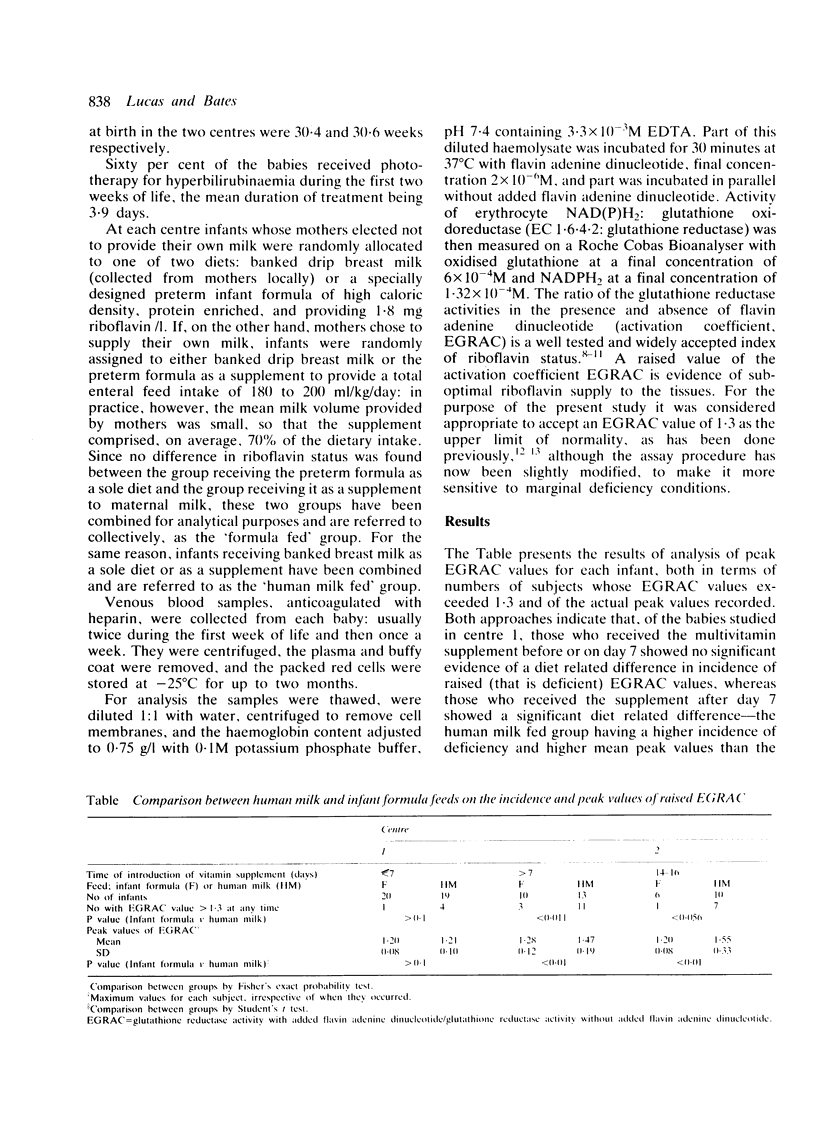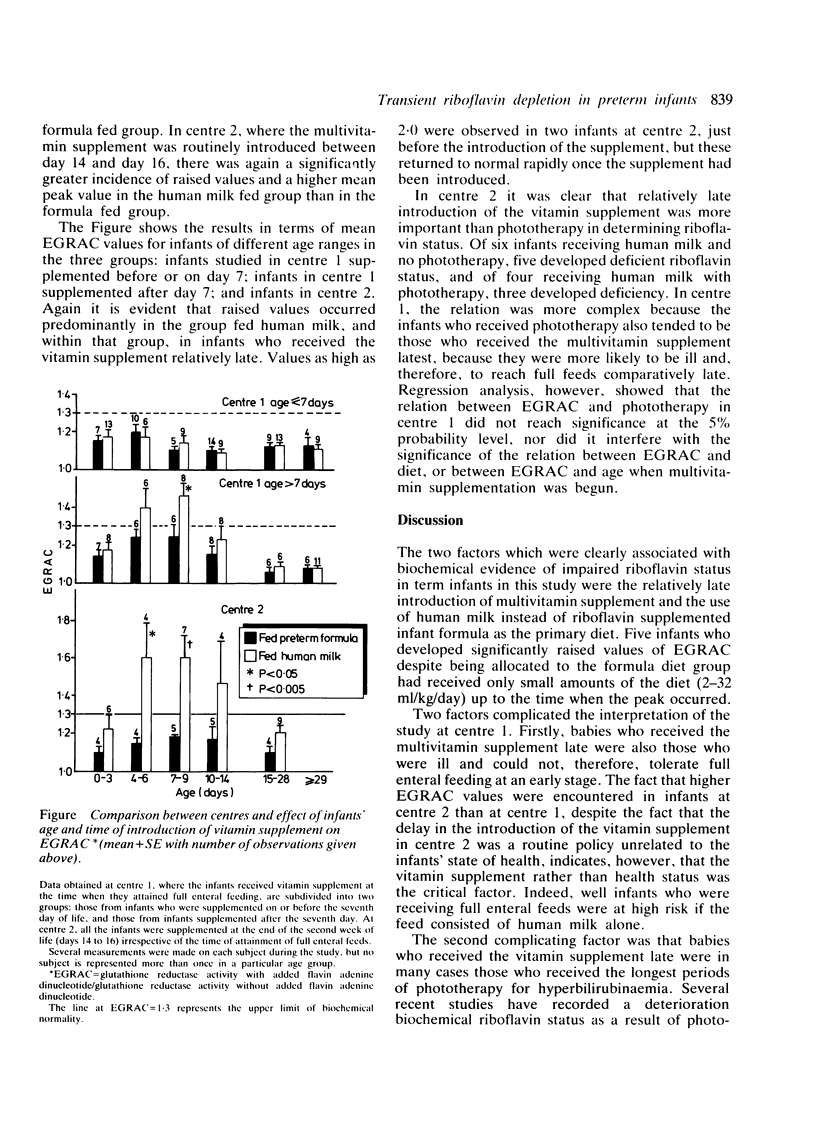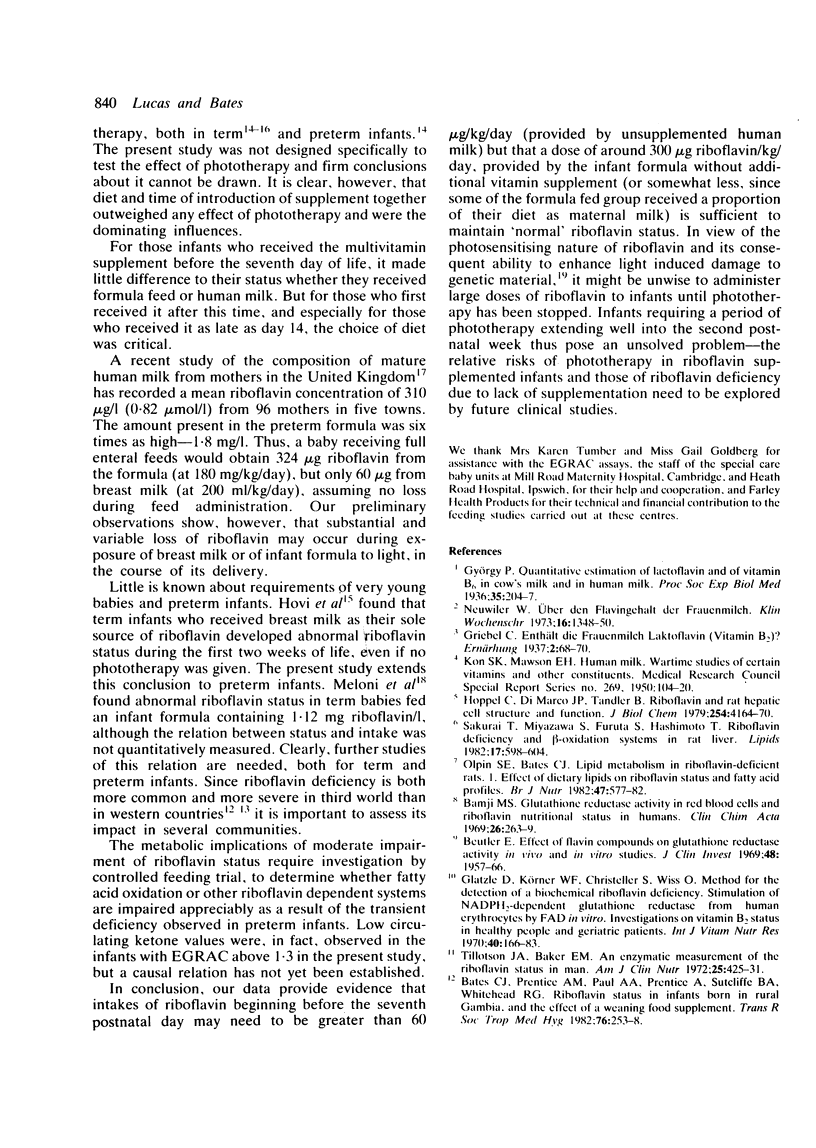Abstract
Biochemical riboflavin status was measured in 68 preterm infants who were receiving either human milk or a preterm infant formula (containing riboflavin, 1.8 mg/l) during the first few weeks of life. The relation between riboflavin status, type of diet, and time of introduction of a multivitamin supplement containing riboflavin was analysed and the duration of phototherapy was recorded. Those who received the multivitamin supplement on or before day 7 of life seldom became deficient and no significant difference between diets was seen in this group. Of those who received the supplement after day 7, human milk fed infants commonly developed abnormal riboflavin status (18 out of 23 infants) compared with a small and significantly lower incidence in the formula fed group. Dietary effects on riboflavin status seemed to outweigh in importance those of phototherapy. It is concluded that the riboflavin content of human milk, which may be lowered by photodegradation, is not sufficient to ensure normal biochemical status in preterm infants. The larger amounts provided by a multivitamin supplement or by a preterm infant formula may, however, prevent biochemical deficiency. The desirability (and safety) of routine riboflavin supplementation of preterm infants is discussed.
Full text
PDF




Selected References
These references are in PubMed. This may not be the complete list of references from this article.
- Bates C. J., Prentice A. M., Paul A. A., Prentice A., Sutcliffe B. A., Whitehead R. G. Riboflavin status in infants born in rural Gambia, and the effect of a weaning food supplement. Trans R Soc Trop Med Hyg. 1982;76(2):253–258. doi: 10.1016/0035-9203(82)90291-7. [DOI] [PubMed] [Google Scholar]
- Glatzle D., Körner W. F., Christeller S., Wiss O. Method for the detection of a biochemical riboflavin deficiency. Stimulation of NADPH2-dependent glutathione reductase from human erythrocytes by FAD in vitro. Investigations on the vitamin B2 status in healthly people and geriatric patients. Int Z Vitaminforsch. 1970;40(2):166–183. [PubMed] [Google Scholar]
- Hoppel C., DiMarco J. P., Tandler B. Riboflavin and rat hepatic cell structure and function. Mitochondrial oxidative metabolism in deficiency states. J Biol Chem. 1979 May 25;254(10):4164–4170. [PubMed] [Google Scholar]
- Hovi L., Hekali R., Siimes M. A. Evidence of riboflavin depletion in breast-fed newborns and its further acceleration during treatment of hyperbilirubinemia by phototherapy. Acta Paediatr Scand. 1979 Jul;68(4):567–570. doi: 10.1111/j.1651-2227.1979.tb05056.x. [DOI] [PubMed] [Google Scholar]
- Olpin S. E., Bates C. J. Lipid metabolism in riboflavin-deficient rats. 1. Effect of dietary lipids on riboflavin status and fatty acid profiles. Br J Nutr. 1982 May;47(3):577–596. doi: 10.1079/bjn19820069. [DOI] [PubMed] [Google Scholar]
- Speck W. T., Chen C. C., Rosenkranz H. S. In vitro studies of effects of light and riboflavin on DNA and HeLa cells. Pediatr Res. 1975 Mar;9(3):150–153. doi: 10.1203/00006450-197503000-00009. [DOI] [PubMed] [Google Scholar]
- Tan K. L., Chow M. T., Karim S. M. Effect of phototherapy on neonatal riboflavin status. J Pediatr. 1978 Sep;93(3):494–497. doi: 10.1016/s0022-3476(78)81176-7. [DOI] [PubMed] [Google Scholar]
- Tillotson J. A., Baker E. M. An enzymatic measurement of the riboflavin status in man. Am J Clin Nutr. 1972 Apr;25(4):425–431. doi: 10.1093/ajcn/25.4.425. [DOI] [PubMed] [Google Scholar]


